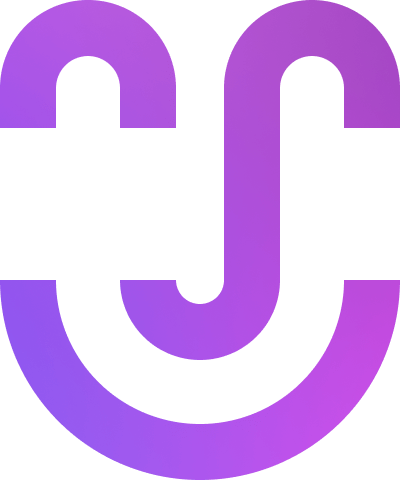For managers, just as for human resources departments, managing occupational health and safety (OHS) is a major challenge.
No one is immune to misfortune. However, companies are responsible for implementing informed OHS management practices to minimize risks to employees.
In the event of an accident or negligence, the consequences for the company, workers, and families can be significant.
Occupational health and safety: the 3 duties of any employer
From a prevention and accountability perspective, companies must exercise due diligence. This concept was decided a long time ago by the courts. Authors Mathieu Beauregard and Sophie Bourque conducted an analysis of the case law and determined that due diligence consists of three duties: foresight, effectiveness, and authority.
1. The duty of foresight
Employers have the duty to exercise foresight, which means remaining vigilant and identifying the dangers that employees are exposed to. To do this, they must know the regulatory requirements of their business sector, their processes, and their working methods in order to identify the potential hazards. Once the risks have been identified, the employer must then take measures to eliminate the dangers and reduce the risk of accidents, including through the implementation of work procedures and inspections of the premises, for example.
The duty of foresight means being alert to potential dangers.
2. The duty of effectiveness
This duty involves ensuring that the preventive measures are put in place in a concrete way and that they are guaranteed to be sustainable. To achieve this, workers are offered training to understand and apply work procedures, and the appropriate supervision is provided so that work is done safely, for example. It is not enough for the employer to rely only on its employees’ common sense and experience alone. A clear action plan must be implemented to ensure the safety of employees and facilities.
This plan must be communicated, accessible, and deployed.
3. The duty of authority
The duty of authority directly concerns the employer’s management rights. Employers must not tolerate breaches of safety rules and must intervene if necessary. Employers must demonstrate their seriousness by applying disciplinary measures when needed.
In the event of a dispute, the employer must demonstrate in court that they have fulfilled these three duties.
4 key roles of artificial intelligence in occupational health and safety
With its power to collect data and interpret it intelligently, artificial intelligence provides support to your teams in numerous ways.
In occupational health and safety, it plays several key roles that allow you not only to better prevent accidents at work, but also respond to them.
1. Ensure compliance with applicable laws and standards
Every employer must comply with the requirements of the applicable laws and standards for health, safety, and the environment. But laws and standards can change. This requires a lot of documentation and procedures that can be tedious to keep on file and consult.
Artificial intelligence supports businesses thanks to its ability to analyze thousands of data items and documents almost instantly. It can help you to ensure your workplace meets industry standards while saving you considerable time.
2. Facilitate and accelerate decision-making
Despite the precautions, let’s say an accident happens soon after. In this case, you must not only act quickly, but also in the right way. Artificial intelligence can tell you the right procedures to follow. The information is automatically filed, and more valuable time is saved.
3. Identify and prevent risks
No one is safe from an accident, but it is in the best interest of employers to implement informed OHS management practices and deploy a prevention plan. AI can certainly help your organization meet these challenges. Thanks to its high analytical capacity, AI is possibly the best analyst around. For example, in a factory, AI might point out that a certain process is likely to result in accidents. HR professionals are then able to take preventive action and help reduce the risk of injury. Thanks to the power and relevance of the data already available to your company, AI has the capacity to develop effective prevention strategies by following predictive modelling techniques to better identify risks.
Following analysis and based on the findings established in your health and safety management data, artificial intelligence can help you to establish an effective prevention plan. This plan can then be automatically updated whenever a new risk is identified. This ensures both legal compliance and increased safety as the plan is continually updated with new actions and measures to be taken to anticipate and prevent future risks.
4. Ensuring ongoing training
As is often said, an ounce of prevention is worth a pound of cure. Prevention through training is one of the keys to improving safety and reducing the risk of accidents at work. Managers and HR are responsible for ensuring that all employees stay up-to-date on their training.
This is not an easy task, especially when you have high rates of employee turnover. Nor is it always easy to take over an entire operations department for training. This is why we often see that training is not always up to date in employee files.
AI can help you to ensure that each person has received the necessary training as part of their duties. Employers may also offer trainings and reminders when a new training needs to be taken or updated.
On that note, Airudi co-develops training courses that are designed in collaboration with a company specialized in virtual reality. These courses are fully customized based on your target skills, procedures, and organizational reality. As they can be taken at any time, they help move the training and prevention process forward in companies. Virtual reality also makes it possible to perform manoeuvres and simulations, making it highly interactive and which helps trainees retain information better.
Well aware of all the challenges of managing occupational health and safety, we have developed an innovative AI-powered platform that helps you prevent risks in the workplace and take real-time action to dramatically improve the safety of your people.
Interested in our solution? Request a demo today!
Amanda Arciero, M.Sc., CRHA
Vice-President, Operations
amanda.arciero@airudi.com








